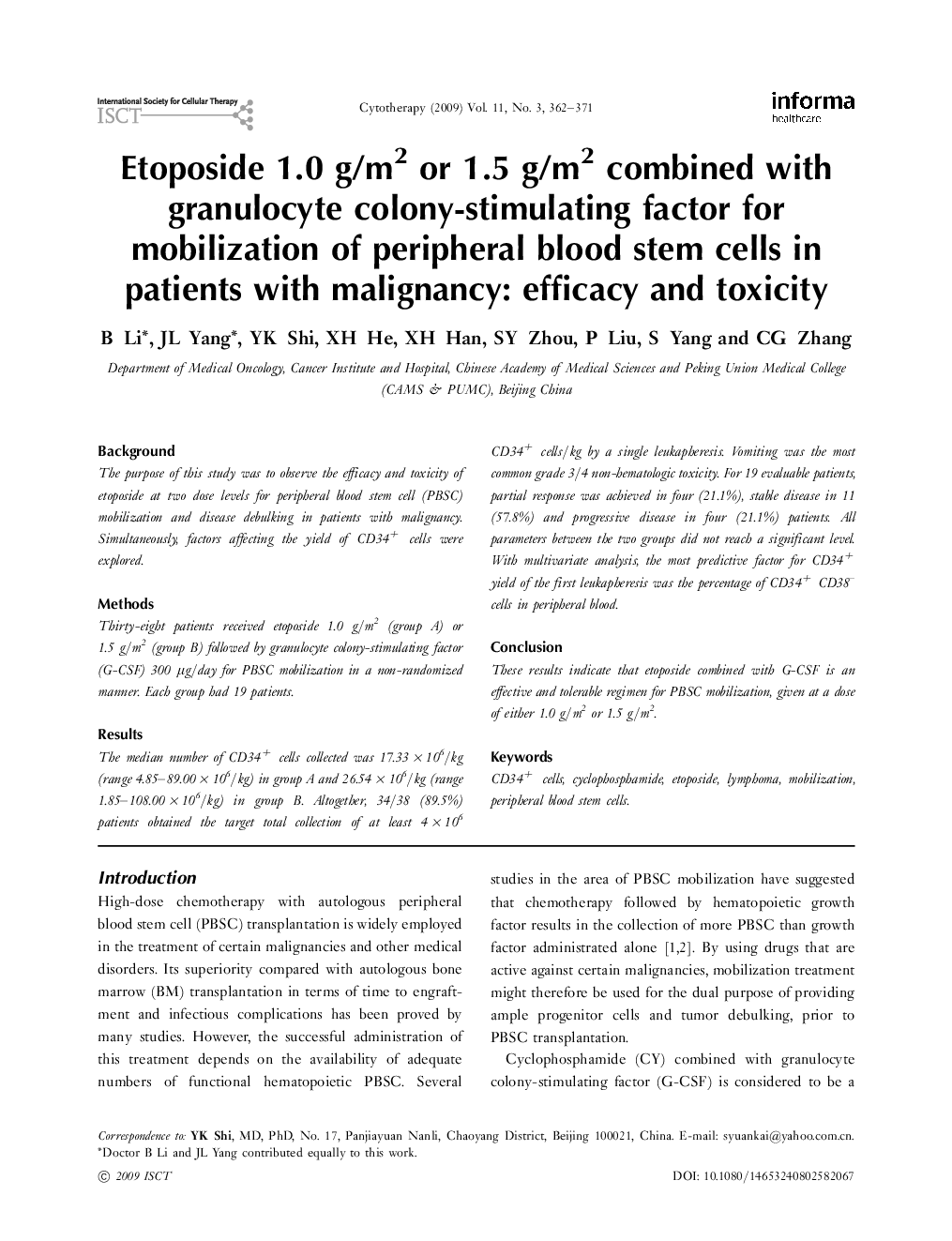| Article ID | Journal | Published Year | Pages | File Type |
|---|---|---|---|---|
| 2172775 | Cytotherapy | 2009 | 10 Pages |
BackgroundThe purpose of this study was to observe the efficacy and toxicity of etoposide at two dose levels for peripheral blood stem cell (PBSC) mobilization and disease debulking in patients with malignancy. Simultaneously, factors affecting the yield of CD34+ cells were explored.MethodsThirty-eight patients received etoposide 1.0 g/m2 (group A) or 1.5 g/m2 (group B) followed by granulocyte colony-stimulating factor (G-CSF) 300 µg/day for PBSC mobilization in a non-randomized manner. Each group had 19 patients.ResultsThe median number of CD34+ cells collected was 17.33 × 106/kg (range 4.85–89.00 × 106/kg) in group A and 26.54 × 106/kg (range 1.85–108.00 × 106/kg) in group B. Altogether, 34/38 (89.5%) patients obtained the target total collection of at least 4 × 106 CD34+ cells/kg by a single leukapheresis. Vomiting was the most common grade 3/4 non-hematologic toxicity. For 19 evaluable patients, partial response was achieved in four (21.1%), stable disease in 11 (57.8%) and progressive disease in four (21.1%) patients. All parameters between the two groups did not reach a significant level. With multivariate analysis, the most predictive factor for CD34+ yield of the first leukapheresis was the percentage of CD34+ CD38− cells in peripheral blood.ConclusionThese results indicate that etoposide combined with G-CSF is an effective and tolerable regimen for PBSC mobilization, given at a dose of either 1.0 g/m2 or 1.5 g/m2.
